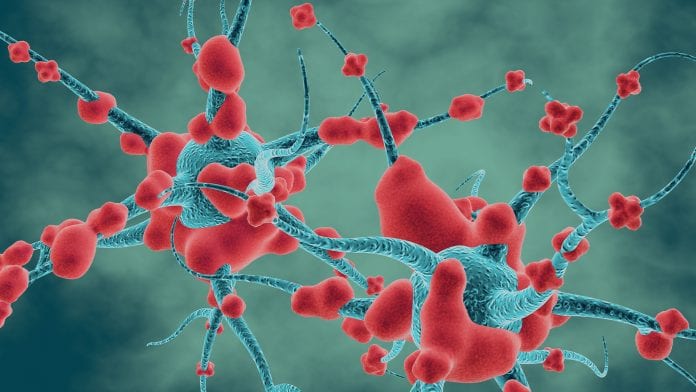
Biologists studying Parkinson’s disease have found that enzymes modify tau to create tau-alpha-synuclein protein clumps on mitochondria.
Biologists studying Parkinson’s disease have long wanted to know how protein clumps of misfolded proteins damage brain cells and contribute to diseases – and now they may have found the answer.
Cracking the code of protein clumps
Corinne Lasmézas, PhD, and her clleagues at Scripps Research, USA, have now cracked the case of pα-syn, a protein clump that is particularly toxic to the cells. Their recent study shows that pα-syn causes damage by recruiting certain enzymes and the protein tau, to damage cells.
The researchers have discovered that a particular type of α-syn clumps, or ‘aggregates’ that they called pα-syn, starts to show up around cellular structures called mitochondria. This is a big problem for cells, which need mitochondria to produce their energy.
Lasmézas explains: “We hope that this research into the root cause of Parkinson’s will bring us closer to finding a disease-modifying treatment.”
Parkinson’s disease is the most common neurodegenerative disease after Alzheimer’s. The disease strikes when the brain starts losing the cells that produce dopamine, a critical neurotransmitter.
What did the research find?
The new research shows that pα-syn hurts mitochondria by starting a cascade of events. First, pα-syn activates a pathway in cells called the MAPK pathway. Enzymes of the MAPK pathway then modify the protein tau. This was a fascinating finding, since tau has long puzzled neuroscientists. Tau is known to form tangles inside neurons in the brains of those suffering from Parkinson’s disease.
Lasmézas and her team found that enzymes of the MAPK pathway modify tau through a process called phosphorylation. This version of tau then clumps together with pα-syn on the mitochondrial membrane. The two protein aggregates grow bigger and bigger, destroying the mitochondria in the process.
Study first author Diego Grassi, PhD, a research associate at Scripps Research at the time of the study, stresses the importance of discovering tau’s role in destroying mitochondria. Scientists know tau is involved in Alzheimer’s disease, therefore this study suggests a mechanism behind how Alzheimer’s and Parkinson’s overlap at the molecular level. The presence of α-syn and tau aggregates is also a clear sign of other forms of dementia, and now scientists know how this might occur.
Lasmézas and Grassi say the next step in this research is to study how to stop pα-syn, with the ultimate goal of treating Parkinson’s disease.









